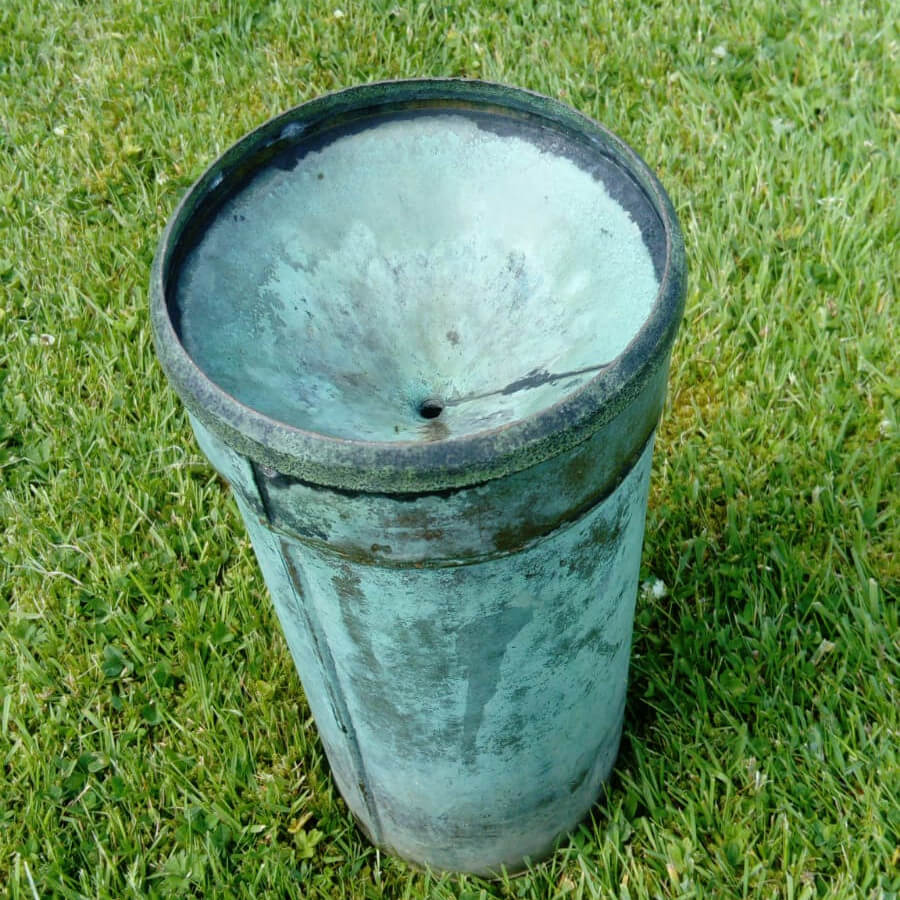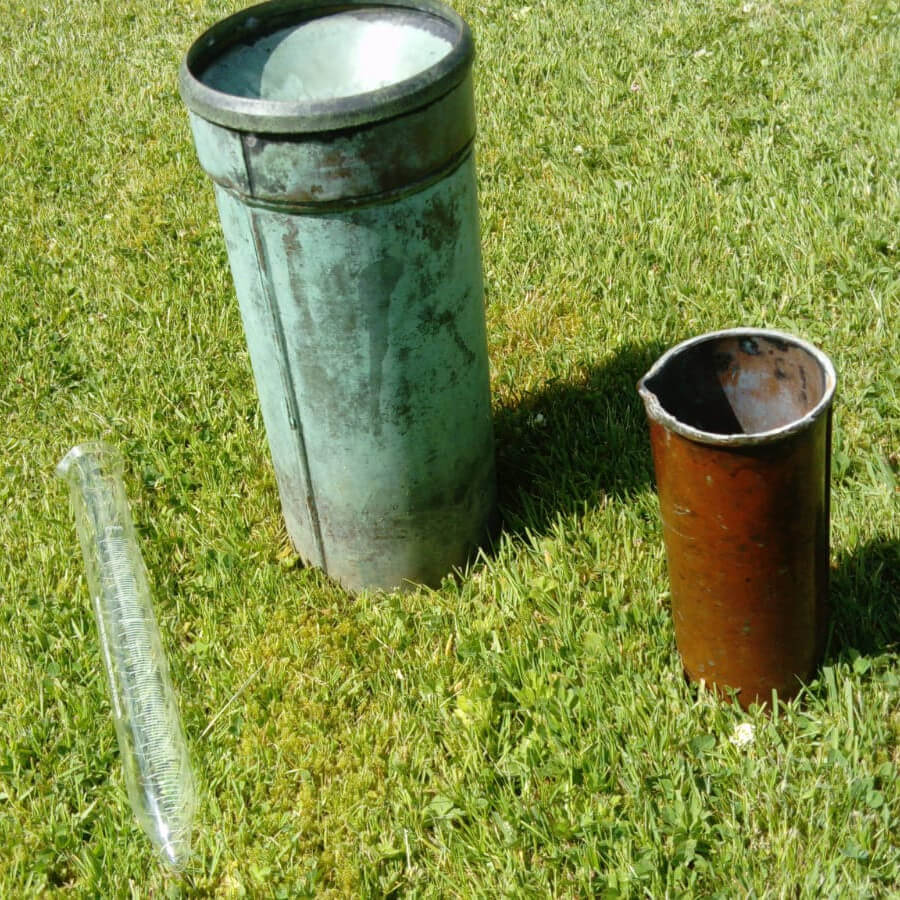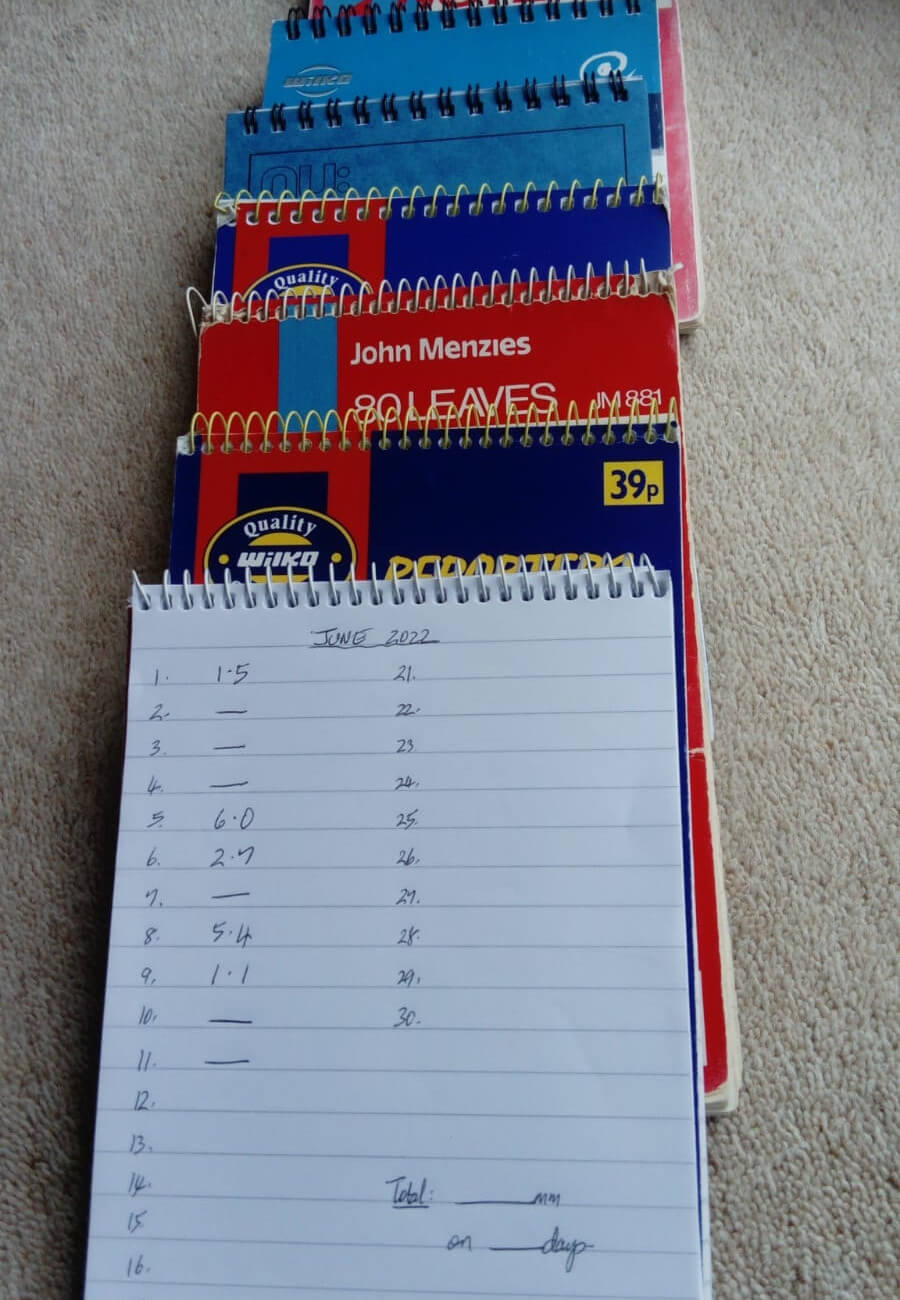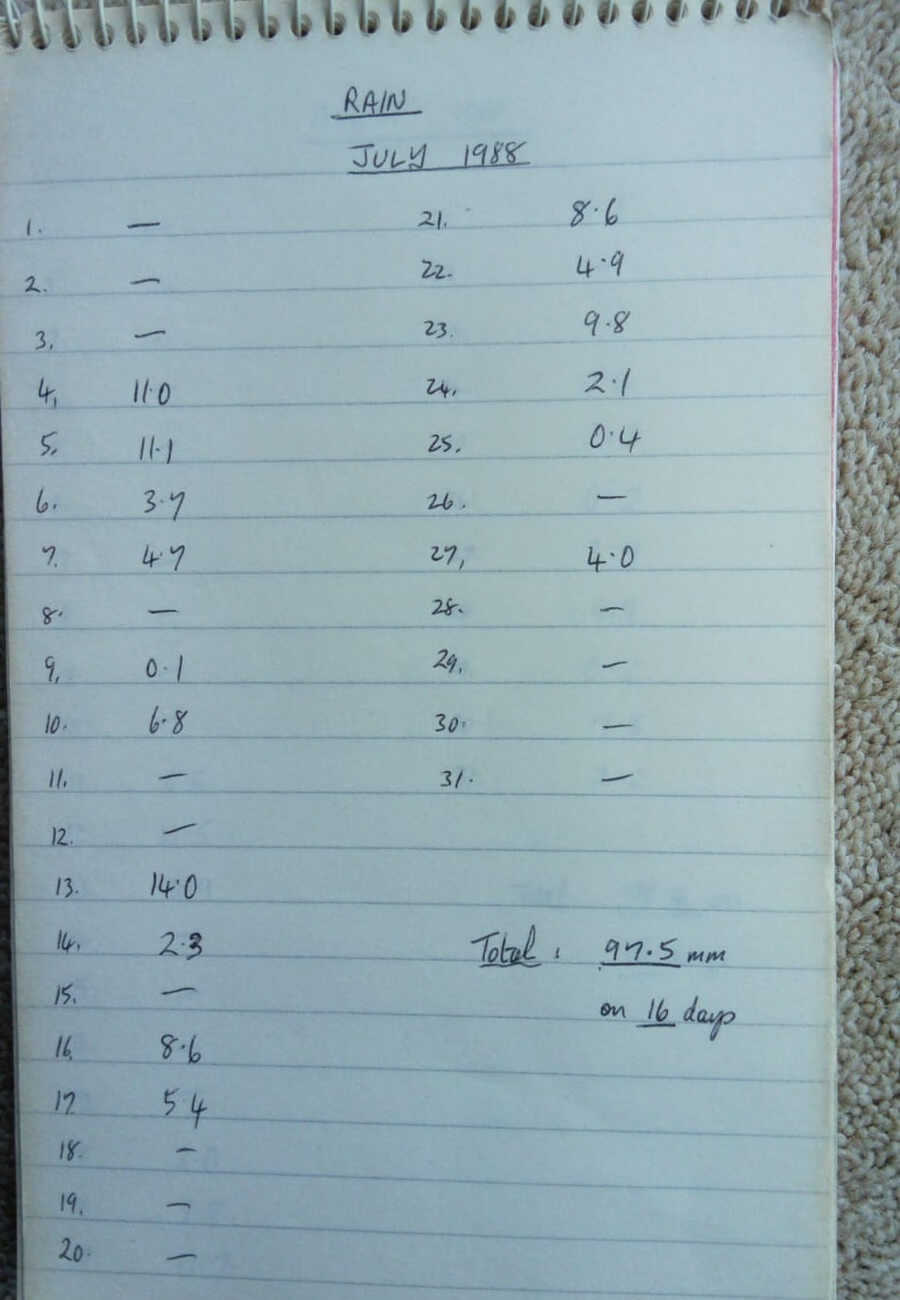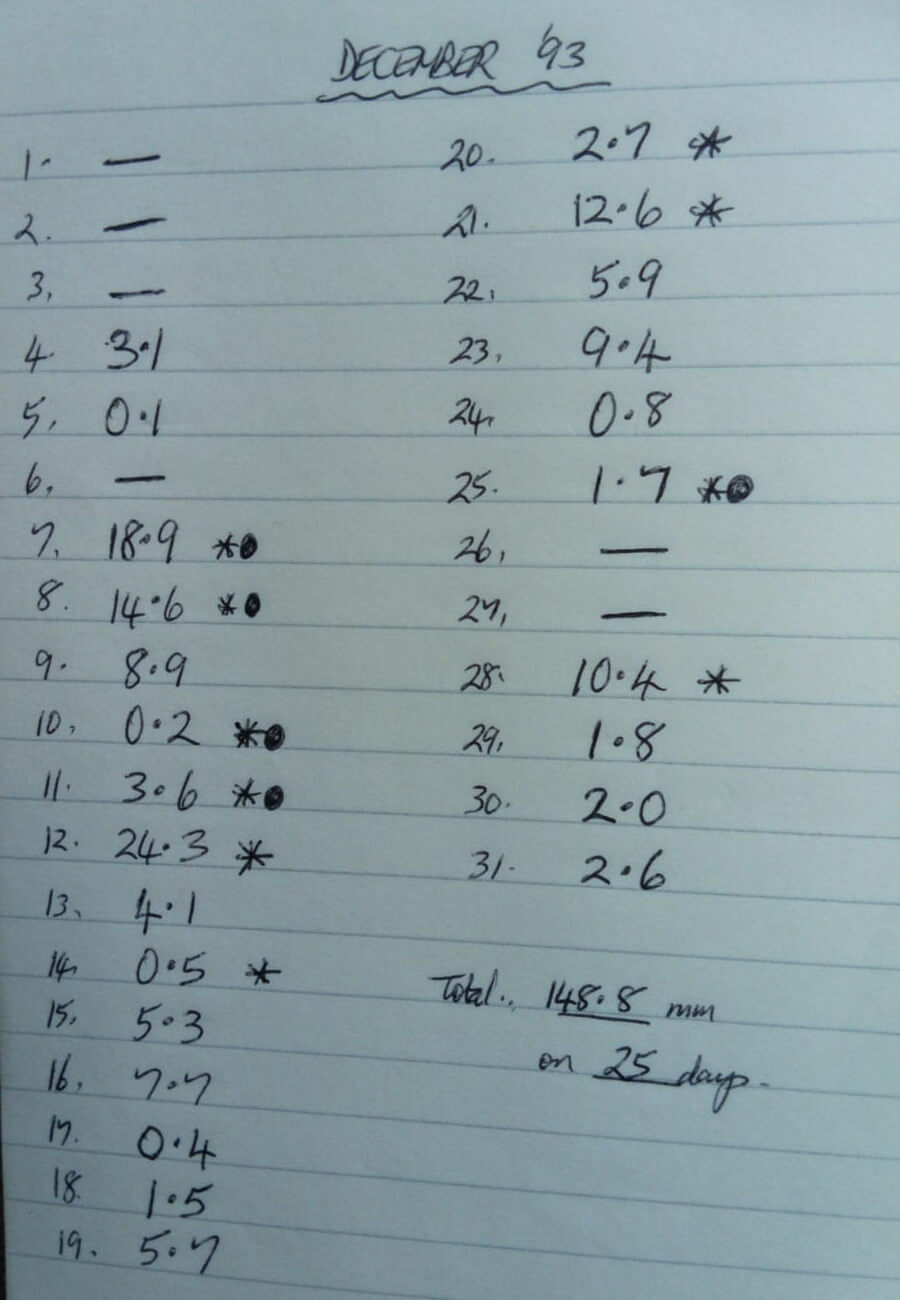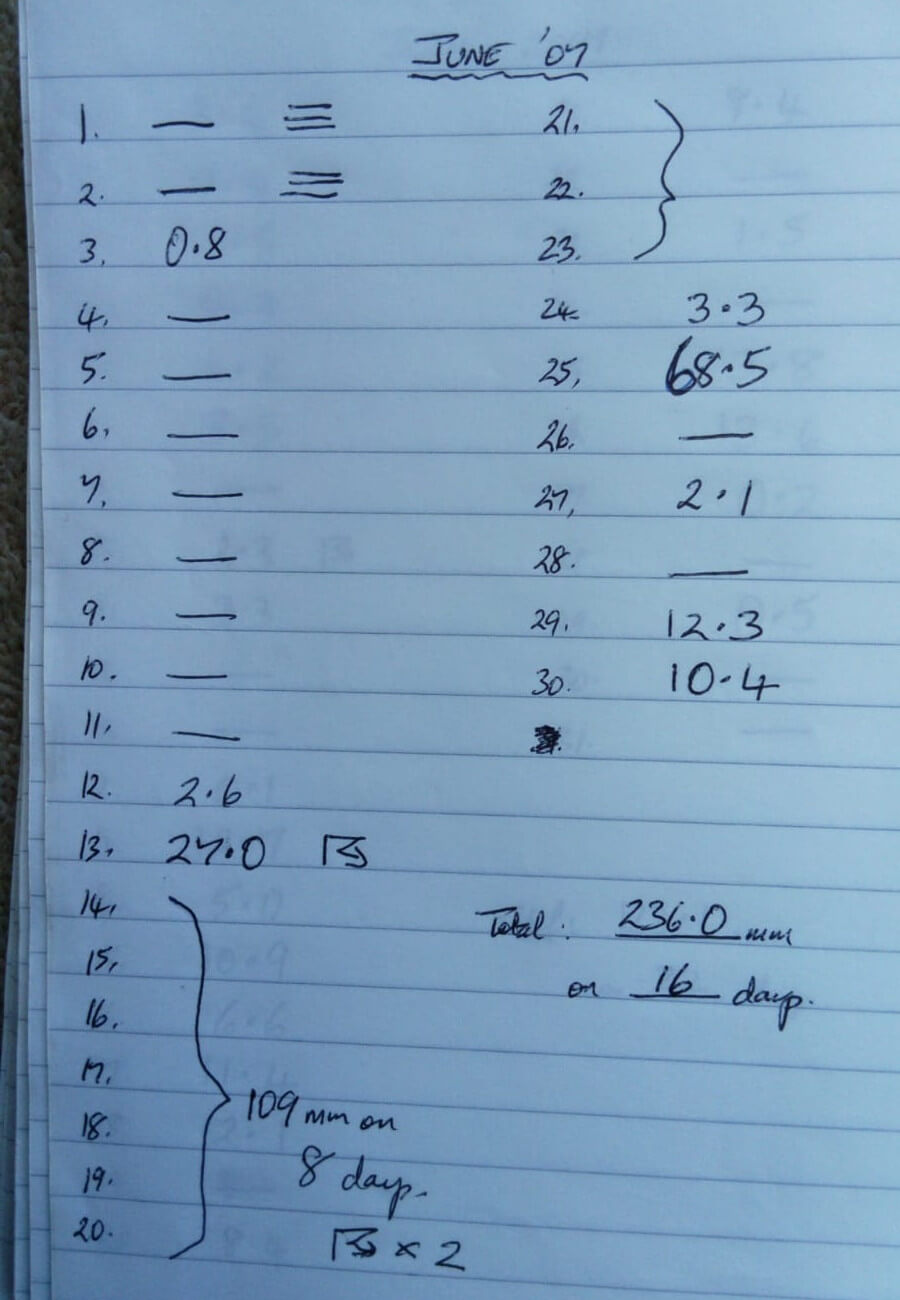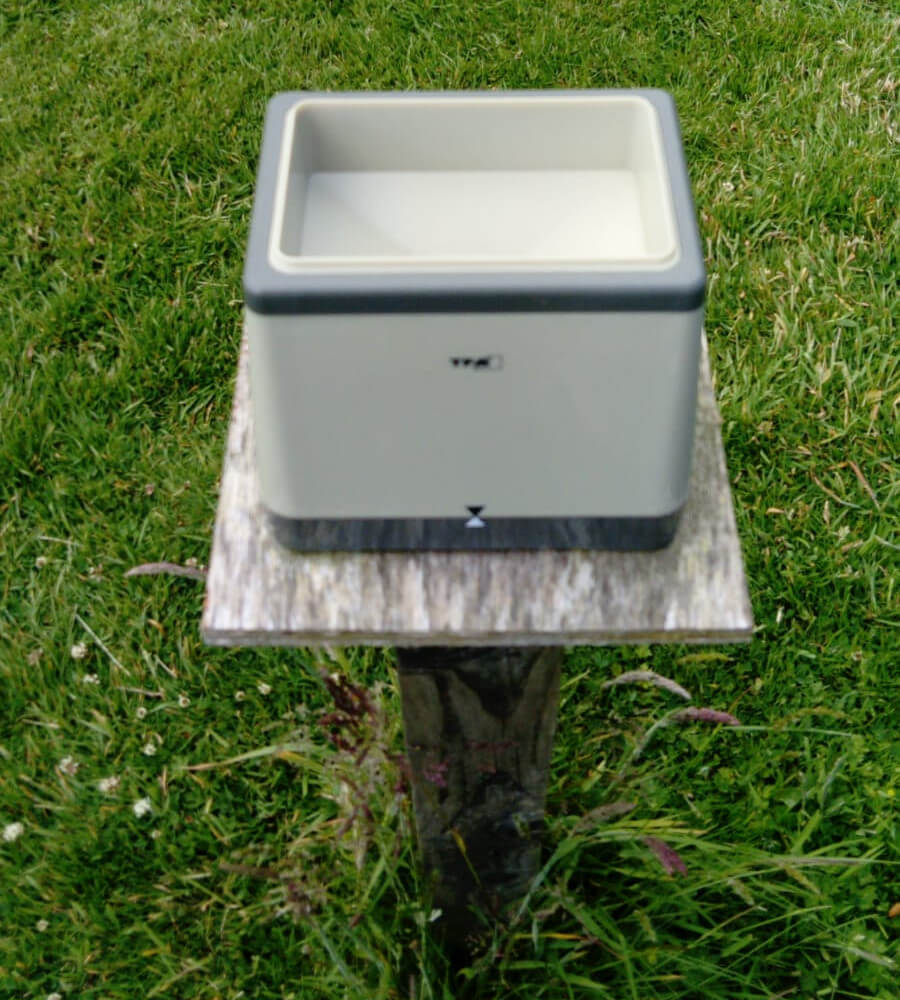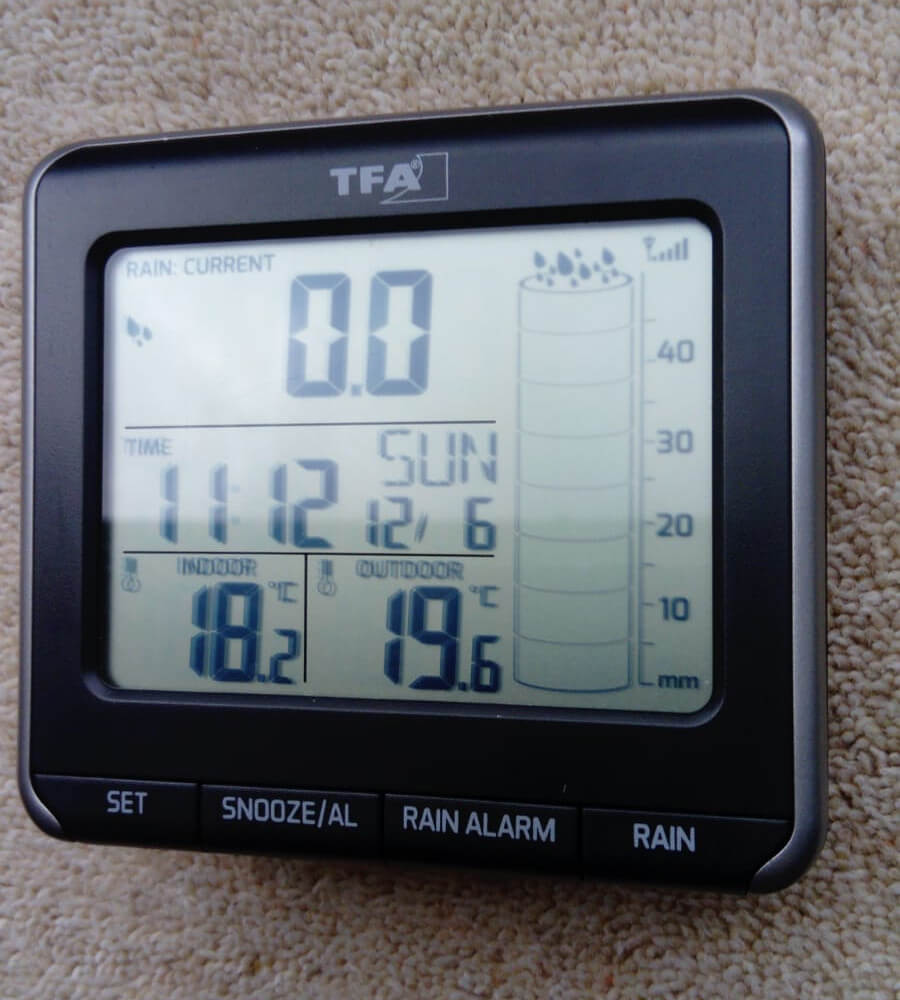How It All Started
A journey 33 years in the making.
The rain gauge. Purchased circa 1960.
My grandad purchased the rain gauge from a shop in Hull, UK around 1960. Hull, at the time, would have been a busy and important port with a number of shops selling tools such as barometers, sextants and other scientific equipment. My grandad was a market gardener and before the days of mobile phones and daily weather forecasts it would have been important for him to know what was happening with the weather. At this time my dad had started secondary school and had taken an interest in meteorology with a weather station in the science department at his school. Together they began measuring rainfall.
The rain gauge itself is a copper rain gauge with an inner collecting beaker and a graduated glass measuring cylinder. The cylinder is therefore set for the size of the rain gauge to ensure accurate recordings.
Collecting the data. Every journey starts with a single step.
Data is recorded one month to a page and spans 7 reporters style notebooks. Each notebook contains 4-5 years worth of data.
The first month of data recorded by my dad was July 1988. Quite a wet month with 97.5mm of rainfall on 16 days, not brilliant for a summer month, it certainly wasn't a BBQ summer that year!
The highest rainfall month ever recorded by my dad was June 2007. This is an infamous month for rainfall in the UK and my dad recorded a staggering 236mm of rainfall on 16 days. None too surprisingly this period also includes the wettest day my dad ever recorded which was 68.5mm of rain on the 25th of June. All records are there to be broken but let's hope we don't break these records anytime soon! Click here to read more about the floods in the UK of June 2007.
Crunching the numbers.
When my dad first started recording rainfall data computers, spreadsheet and databases were in their infancy, so a more manual method of data analysis was required. My dad calculated monthly and yearly rainfall totals and number of days of rain as well as totalling the number of days with notable weather such as thunder, hail or snow.
There are of course a number of different ways this could have changed over the years but sometimes the old-fashioned approach gives you a better insight into the data itself and leads you notice trends and patterns in the data.

Vorsprung durch Technik. Modern gadgets.
Over the years rain gauges have evolved as technology has improved and there are dozens of products on the market to measure and monitor rain fall. Several years ago, my dad bought a tipping bucket electric rain gauge which he uses alongside his traditional rain gauge as a control.
